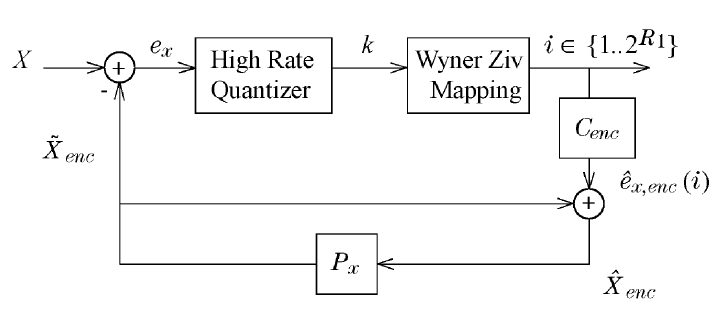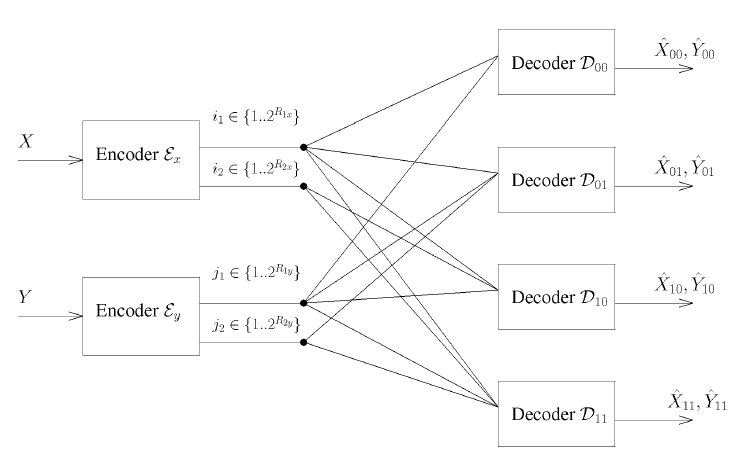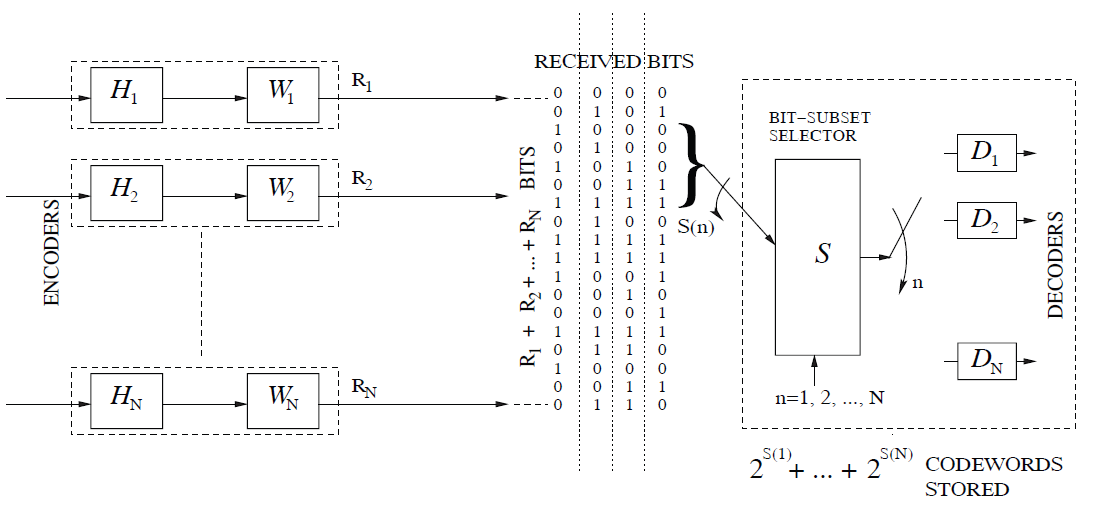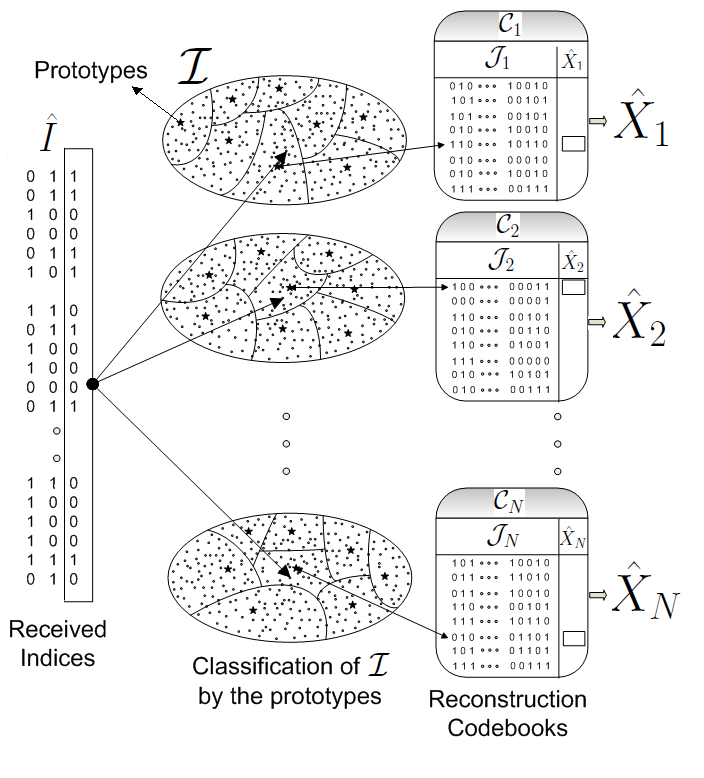Distributed Source Quantizer Design
Research Directions:
Distributed predictive coding
Distributed scalable coding
Globally optimal qunatizer design for DSC design
Event based compression for sensor networks
Large scale distributed coding
Error/Erasure-Resilient distributed coding

 In real-world, data collected from sensors exhibits both temporal and inter-source correlations e.g., a network of video cameras monitoring a region. It may appear that the mature field of predictive coding can be combined in a straight-forward manner with distributed coding algorithms to utilize both temporal and inter-source correlations. But such a naive approach results in highly unstable and poor solutions. We identified the inherent "conflicts" between distributed and predictive coding and proposed different low complexity, low delay and stable distributed predictive coding schemes including the cases where drift (encoder/decoder mismatch) is inevitable but explicitly controlled.
In real-world, data collected from sensors exhibits both temporal and inter-source correlations e.g., a network of video cameras monitoring a region. It may appear that the mature field of predictive coding can be combined in a straight-forward manner with distributed coding algorithms to utilize both temporal and inter-source correlations. But such a naive approach results in highly unstable and poor solutions. We identified the inherent "conflicts" between distributed and predictive coding and proposed different low complexity, low delay and stable distributed predictive coding schemes including the cases where drift (encoder/decoder mismatch) is inevitable but explicitly controlled. We considered the problem of distributed coding of correlated sources that are communicated to a central unit, a setting typically encountered in sensor networks. As communication channel conditions may vary with time, it is often desirable to guarantee a base layer of coarse information during channel fades, as well as robustness to channel link (or sensor) failures. Specifically, we considered two different cases for the scalable distributed coding problem:
We considered the problem of distributed coding of correlated sources that are communicated to a central unit, a setting typically encountered in sensor networks. As communication channel conditions may vary with time, it is often desirable to guarantee a base layer of coarse information during channel fades, as well as robustness to channel link (or sensor) failures. Specifically, we considered two different cases for the scalable distributed coding problem:
 A major obstacle which poses an existential threat on practical deployment of distributed source codes in real world sensor networks is the critical requirement for error-resilience given the severe channel conditions in many wireless sensor networks. Unfortunately, the codes designed for a noise-less framework provide extremely poor error resilience and cannot be deployed directly in a noisy setting. Motivated by this challenge, we proposed a unified approach for large scale, error-resilient distributed source coding. The design of such error-resilient DSC is a very challenging problem, as the objectives of DSC and channel coding are counter-active in the sense that one tries to eliminate dependencies, while the other tries to correct errors using the dependencies. On the one hand, the system could be made compression centric and designed to exploit inter-source correlations analogous to the noiseless framework. However, this reduces the dependencies among the transmitted bits leading to poor error-resilience at the decoder and eventually poor reconstruction distortions. On the other extreme, the encoders could be designed to preserve all the correlations among the transmitted bits which could be exploited at the decoder to achieve good error resilience. However, such a design fails to exploit the gains due to distributed compression leading to poor over all rate-distortion performance.
A major obstacle which poses an existential threat on practical deployment of distributed source codes in real world sensor networks is the critical requirement for error-resilience given the severe channel conditions in many wireless sensor networks. Unfortunately, the codes designed for a noise-less framework provide extremely poor error resilience and cannot be deployed directly in a noisy setting. Motivated by this challenge, we proposed a unified approach for large scale, error-resilient distributed source coding. The design of such error-resilient DSC is a very challenging problem, as the objectives of DSC and channel coding are counter-active in the sense that one tries to eliminate dependencies, while the other tries to correct errors using the dependencies. On the one hand, the system could be made compression centric and designed to exploit inter-source correlations analogous to the noiseless framework. However, this reduces the dependencies among the transmitted bits leading to poor error-resilience at the decoder and eventually poor reconstruction distortions. On the other extreme, the encoders could be designed to preserve all the correlations among the transmitted bits which could be exploited at the decoder to achieve good error resilience. However, such a design fails to exploit the gains due to distributed compression leading to poor over all rate-distortion performance.